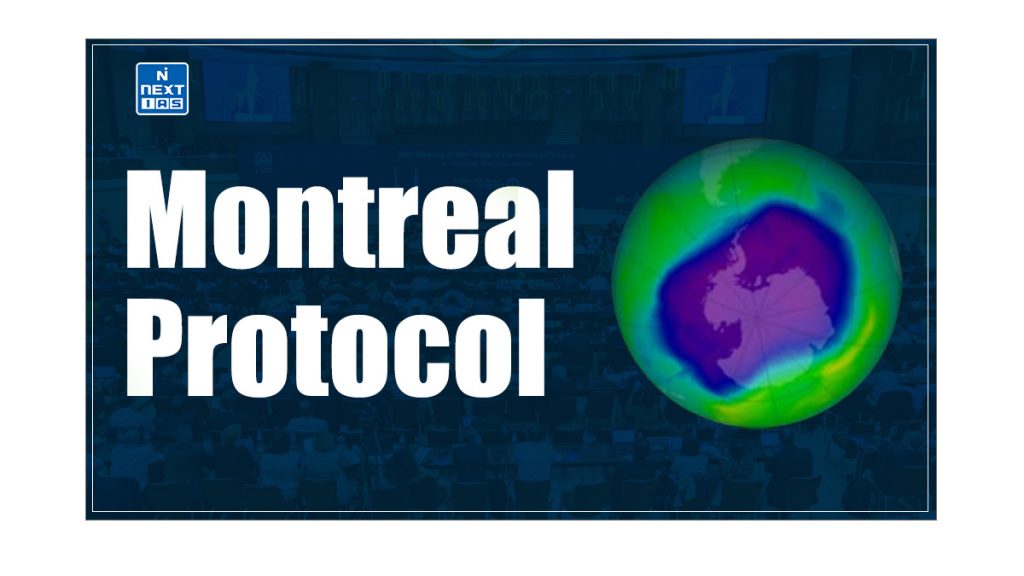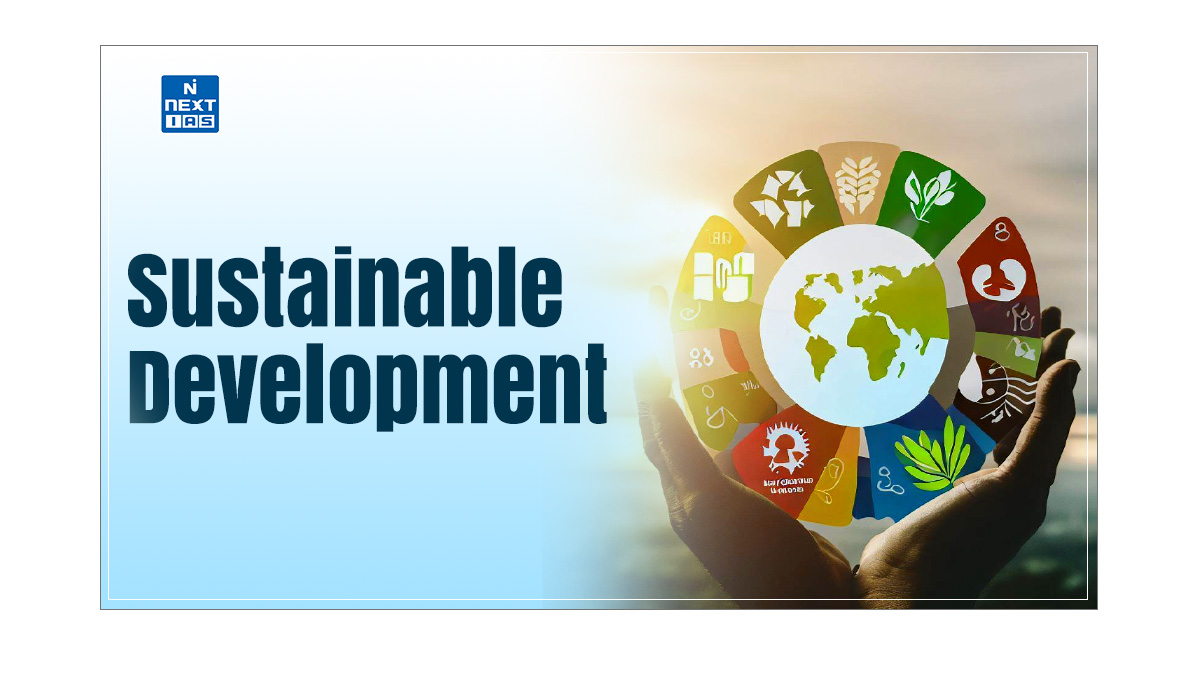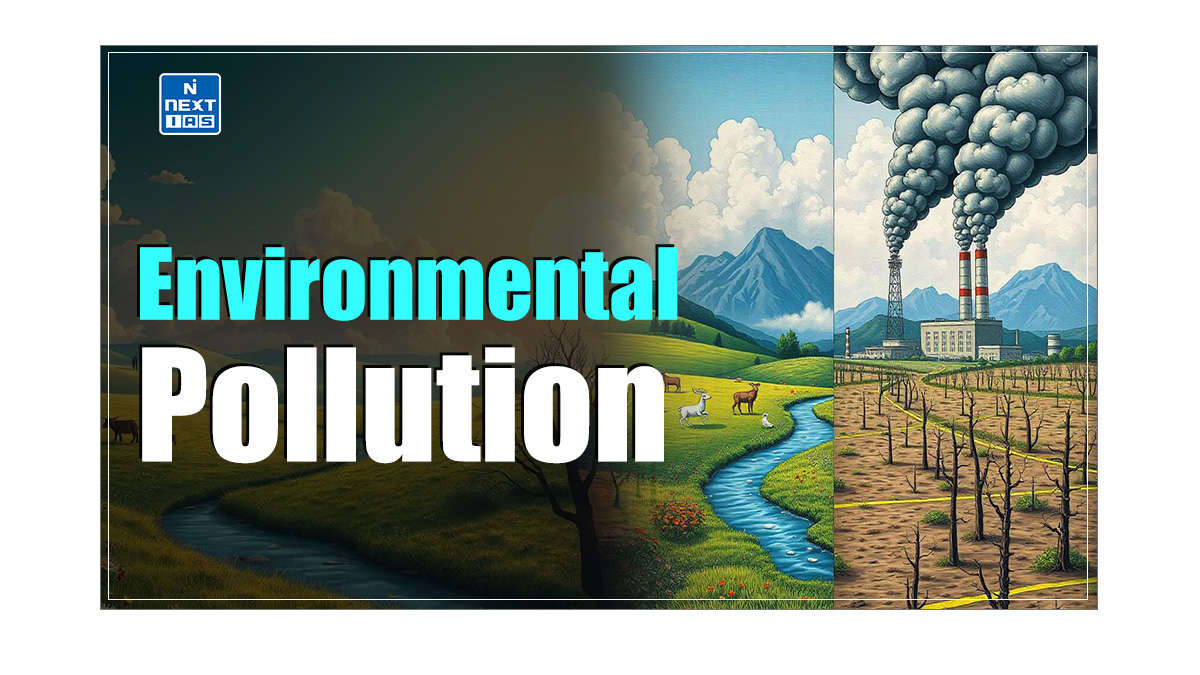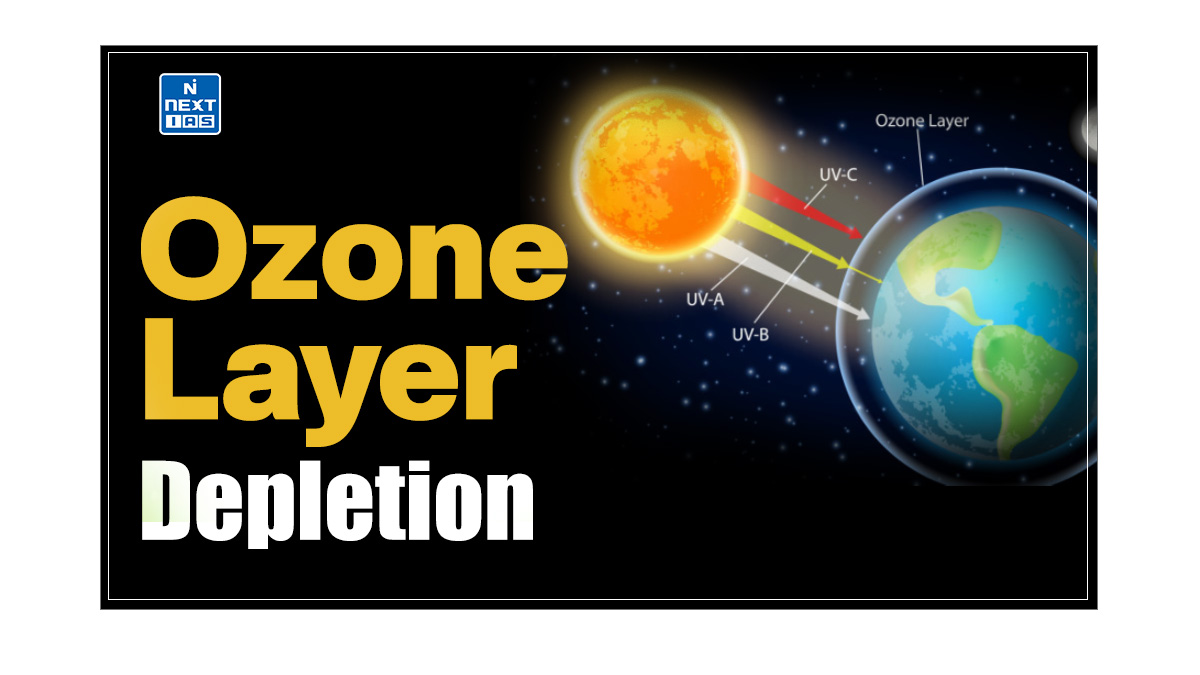
The Montreal Protocol is an international treaty adopted in 1987 to phase out the production and consumption of substances that deplete the ozone layer. It is widely regarded as one of the most successful environmental agreements, having significantly contributed to the ozone layer’s recovery and reducing harmful ultraviolet radiation. This article aims to study in detail the objectives, structure, and global impact of the Montreal Protocol, its amendments, and India’s role in its implementation.
About Montreal Protocol
- The Montreal Protocol, agreed upon in 1987 and entered into force on 1 January 1989, is a landmark international agreement designed to protect the ozone layer.
- The Montreal Protocol aims to reduce the production and consumption of ozone-depleting substances, thereby reducing their abundance in the atmosphere and protecting the earth’s fragile ozone layer.
- The Montreal Protocol is widely recognised as the most successful international environmental treaty in history.
- It establishes a mandatory timetable for the phase-out of ODS and has been universally ratified, with all 197 countries worldwide as Parties to the Vienna Convention and its Montreal Protocol.
Objectives of Montreal Protocol
The objectives of Montreal Protocol are as follows:
- To gradually reduce and eliminate the production and consumption of substances that harm the ozone layer.
- To ensure that all signatory countries commit to and implement the Protocol’s provisions.
- To promote ongoing scientific research and assessments to monitor the ozone layer’s health and the Protocol’s effectiveness.
- To assist developing countries in transitioning to ozone-friendly technologies and practices through the Multilateral Fund.
Ozone Depleting Substances in Montreal Protocol
- The Treaty is structured around several groups of halogenated hydrocarbons that have been shown to contribute to ozone depletion.
- All of these Ozone-Depleting Substances (ODS) contain either chlorine or bromine.
- The Montreal Protocol has successfully curbed the production of Chlorofluorocarbons (CFCs) and other ODS by 98%, significantly contributing to repairing the ozone hole.
- In addition to CFCs, the Montreal Protocol addresses other harmful substances, including halons, carbon tetrachloride (CTC), and methyl chloroform.
- By regulating these chemicals, the Montreal Protocol has fostered the development of safer alternatives, promoting the use of substances with lower environmental impact.
- The collective global effort has not only led to a recovery of the ozone layer but also underscored the importance of international cooperation in addressing environmental challenges.
Universal Ratification and Amendments in Montreal Protocol
The Montreal Protocol was the first treaty in history to achieve universal ratification, establishing it as a model for global cooperation. Over the years, the Protocol has undergone several significant revisions, each aimed at enhancing its effectiveness in combating ozone depletion.
Key Amendments in Montreal Protocol
- London Amendment (1990): This amendment mandated the phase-out of CFCs, halons, and carbon tetrachloride (CTC) by January 2010.
- It also introduced HCFCs as transitional substitutes for CFCs, which were allowed until 2040. India ratified this Amendment in 1992.
- Copenhagen Amendment (1992): This amendment introduced HCFCs, HBFCs, and methyl bromide as controlled substances.
- India initially refrained from ratifying this Amendment due to uncertainties but ultimately ratified it on March 3, 2003.
- Montreal Amendment (1997): This amendment mandated a licensing system for importing and exporting controlled substances by March 1998 or January 1, 2000.
- The ban on methyl bromide imports and exports did not impact India as it does not engage in this trade. India ratified this Amendment on March 3, 2003.
- Beijing Amendment (1999): This amendment introduced control measures for producing HCFCs for developed countries while providing additional allowances for developing countries.
- India ratified this Amendment on March 3, 2003, recognising its position as a producer of HCFC-22.
Montreal Protocol Multilateral Fund (MPMF)
- The Montreal Protocol established the Multilateral Fund (MPMF) to assist developing countries in phasing out ODS.
- This Montreal Protocol Multilateral Fund (MPMF) finances the incremental costs associated with the ODS phase-out, including technology transfer, capital equipment purchases, and operational costs for transitioning to non-ODS technologies.
- Enterprises using older ODS technologies (established before July 25, 1995) are eligible for funding from the Montreal Protocol Multilateral Fund (MPMF) to convert to non-ODS technology.
- India is entitled to this assistance as part of its commitment to phase out ODS and transition to sustainable alternatives.
India and the Montreal Protocol
Government Responsibility
- The Government of India has entrusted the Ministry of Environment, Forest and Climate Change (MoEF&CC) with protecting the ozone layer and implementing the Montreal Protocol on Substances that Deplete the Ozone Layer.
- India prepared a detailed Country Program (CP) in 1993, which:
- To outline the phase-out of ODS under the National Industrial Development Strategy.
- To ensure that this transition would not impose undue burdens on consumers and industry.
- To enable access to the financial mechanisms stipulated in the Montreal Protocol, the country program was updated in 2006 to reflect new challenges and commitments.
Empowered Steering Committee (ESC)
The Empowered Steering Committee (ESC) is responsible for:
- Implementing the provisions of the Montreal Protocol.
- Reviewing various policies and implementation options.
- Approving projects related to ODS phase-out.
- Monitoring the progress of these initiatives.
National Ozone Unit (Ozone Cell)
The Ministry has established the Ozone Cell as a National Ozone Unit (NOU) to provide necessary services for:
- Effective and timely implementation of the Montreal Protocol.
- Coordinate the ODS phase-out program in India.
CFC Phase-Out
- India has proactively phased out the production and consumption of chlorofluorocarbons (CFCs), with the following milestones:
- CFCs were allowed only in Meter-Dose Inhalers (MDIs) for treating asthma and Chronic Obstructive Pulmonary Disease (COPD) until August 1, 2008.
- The use of CFCs in MDIs was completely phased out by December 2012.
- As of January 1, 2010, the production and consumption of carbon tetrachloride (CTC) and halons were fully phased out.
- The Ozone Cell is currently focused on phasing out the production and consumption of Hydrochlorofluorocarbons (HCFCs) with an accelerated phase-out schedule, in alignment with the commitments made under the Montreal Protocol.
| – India produces CFC-11, CFC-12, CFC-13, H3- HALON-1211, HCFC-22, HALON-1301, Carbon Tetrachloride (CTC), methyl chloroform and methyl bromide. – These ozone-depleting substances (ODS) are used in air conditioning, electronics, foams, and aerosol fumigation applications. |
Kigali Agreement to Montreal Protocol
- The Kigali agreement is an amendment to the Montreal Protocol that will substantially limit the emission of Hydrofluorocarbons (HFCs) that contribute to global warming.
- The decision was taken at the 28th meeting of the Parties to the Montreal Protocol, held in 2016 in Kigali, Rwanda, where 197 negotiating countries signed the historic agreement.
- This phase-down is expected to arrest the global average temperature rise to 0.5°C by 2100.
- It is a legally binding agreement with non-compliance measures between the signatory parties.
- If at least 20 member parties ratify it by then, it will come into effect on 1 January 2019.
| – Hydrofluorocarbons (HFCs) are a family of Greenhouse Gases primarily used as refrigerants in home and car air conditioners. – HFCs are currently the world’s fastest-growing greenhouse gases (GHGs). Their ability to trap heat radiating off the Earth is thousands of times greater than that of carbon dioxide. – In general, HFCs are relatively nonflammable, chemically stable, and nonreactive. Many are colourless, odourless gases, but some, such as HFCs, are liquids at room temperature. |
Conclusion
The Montreal Protocol exemplifies successful global cooperation in environmental protection. Its ongoing commitment to phasing out harmful substances helps recover the ozone layer and mitigates climate change impacts. As nations continue to collaborate under this treaty, we move closer to ensuring a healthier planet for future generations, highlighting the importance of unity in tackling global environmental issues.
Difference between Kyoto Protocol and Montreal Protocol
| Aspect | Kyoto Protocol | Montreal Protocol |
|---|---|---|
| Focus | Greenhouse gas emissions | Ozone-depleting substances |
| Key Substances/Areas | CO2, CH4, N2O | CFCs, Halons |
| Commitments | Binding targets for developed countries | Phase-out of specific substances |
| Flexibility | Flexibility mechanisms (carbon trading) | Strong compliance, clear phase-out timeline |
| Impact | Mixed results in reducing emissions | Successful recovery of the ozone layer |
Frequently Asked Questions (FAQs)
What is the Montreal Protocol?
The Montreal Protocol is an international treaty designed to phase out the production and consumption of substances that deplete the ozone layer.
How many countries signed the Montreal Protocol?
As of now, 197 countries have signed the Montreal Protocol.
Is the Montreal Protocol legally binding?
Yes, the Montreal Protocol is legally binding for its signatory countries, requiring them to adhere to the agreed-upon commitments.
What is the main aim of the Montreal Protocol?
The main aim of the Montreal Protocol is to protect the ozone layer by phasing out ozone-depleting substances.
What are Ozone-depleting substances?
Ozone-depleting substances (ODS) are chemicals that damage the ozone layer, including chlorofluorocarbons (CFCs), halons, and other related compounds.
How to protect the ozone layer?
To protect the ozone layer, reduce the use of ozone-depleting substances, support policies that phase them out, and promote alternatives that are ozone-friendly.






